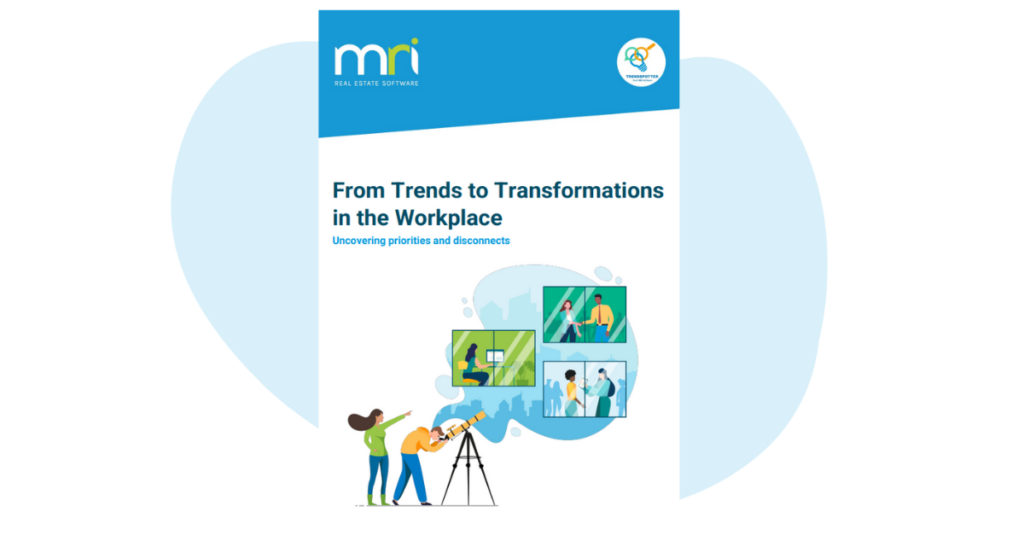Top 7 benefits of a building management system
In today’s rapidly evolving infrastructure landscape, understanding the pivotal role of Building Management Systems (BMS) is essential for optimal facilities management. As a cornerstone of modern building maintenance software, BMS integrates seamlessly with CAFM basics, revolutionising how facilities are managed and operated.
At MRI Software, we develop innovative technology solutions designed to streamline and automate key processes for real estate agencies. In this article, we delve into the range of benefits that come from employing a BMS, highlighting its significance in streamlining operations, enhancing efficiency, and reducing costs.
From automating routine maintenance tasks through to providing comprehensive data analytics for informed decision-making, a BMS emerges as an indispensable tool in the arsenal of facilities management, ensuring buildings not only meet but exceed operational and sustainability standards.
List of Building Management System Benefits
Let’s take a look at seven different ways in which building management systems can be beneficial for tenants, managers, and the overall environment.
Improved Energy Efficiency
A Building Management System enhances energy efficiency by automating control of a building’s systems like HVAC and lighting, based on occupancy and external conditions. It reduces energy wastage by ensuring systems operate only as needed.
Adjustments in real-time and data analysis over time allow for optimisation of energy use, significantly lowering energy costs. This not only results in substantial savings but also supports sustainability by minimising the building’s environmental impact.
Cost Savings
A Building Management System directly contributes to cost savings by optimising building operations and energy consumption. By intelligently controlling HVAC, lighting, and other systems, it ensures that energy is used only when and where needed, avoiding unnecessary expenditure. The BMS’s ability to monitor and adjust settings in real time prevents overuse of resources, leading to lower utility bills.
It extends the lifespan of building equipment through efficient use and preventative maintenance schedules, reducing the need for expensive repairs and replacements. This holistic approach to building management translates into significant financial savings over time.
Improved Security
A Building Management System enhances security by integrating and managing various security systems, such as access control, surveillance cameras, and alarm systems. It allows for centralised monitoring, ensuring that only authorised individuals gain access to certain areas, and detects unusual activities through surveillance.
In the event of a security breach, the BMS can initiate appropriate responses, such as locking down areas or alerting security personnel. This integrated approach not only improves the overall security of the building but also provides a safer environment for occupants.
Accurate Reporting
A Building Management System facilitates accurate reporting by collecting and analysing data from various building systems, such as energy usage, temperature, and occupancy levels. This data is compiled into detailed reports, providing insights into the building’s operational efficiency.
By identifying trends and deviations, a BMS enables facility managers to make informed decisions, optimise building performance, and plan maintenance more effectively. Accurate reporting through a BMS ensures transparency, supports sustainability goals, and helps in compliance with energy regulations, enhancing overall building management.
Increased Productivity
A Building Management System (BMS) increases productivity by creating an optimal working environment. By regulating temperature, lighting, and air quality, a BMS ensures comfort for occupants, which is directly linked to improved concentration and efficiency.
Automated controls free up facility management staff, allowing them to focus on more strategic tasks rather than routine operations. By maintaining equipment efficiently and predicting maintenance needs, a BMS minimises downtime, ensuring that the workplace is always conducive to productivity.
Enhanced Comfort
Building Management Systems significantly enhance occupant comfort by meticulously regulating indoor environmental conditions. Through the integration of advanced technologies, BMS facilitate the optimal adjustment of temperature, humidity, and lighting, ensuring spaces are not only comfortable but also tailored to the preferences of those within.
The ability to maintain consistent indoor climates reduces distractions and promotes a more pleasant and productive environment. Furthermore, BMS can adapt in real-time to changes in outdoor conditions and occupancy levels, providing a seamless and personalised comfort experience for all occupants, thereby elevating their overall satisfaction and well-being.
Improved Staff Productivity
Building Management Systems play a pivotal role in enhancing staff productivity by creating an optimal working environment. By automating control over temperature, lighting, and air quality, BMS ensures that the workplace conditions are consistently maintained at comfortable levels. This reduces physical discomforts, such as being too hot or too cold, which can detract from focus and efficiency.
Good air quality and adequate lighting have been linked to improved cognitive function, reducing fatigue and enhancing concentration. By removing environmental stressors, employees can focus better on their tasks, leading to higher productivity, fewer errors, and an overall more energised and motivated workforce.
Improve Your Building Efficiency With a Building Management System
Looking to improve your building efficiency with a Building Management System? Contact us today.
Building Management Systems FAQs
Facilities Management software
Leading solutions for property occupiers, owners and service providers & contractors.

From Trends to Transformations in the Workplace – Uncovering Priorities and Disconnects
In partnership with CoreNet Global, MRI Software conducted a survey of real estate professionals around the world to examine emerging trends in office transformations. These insights provide a global perspective, with input from the APAC, EMEA, North…

